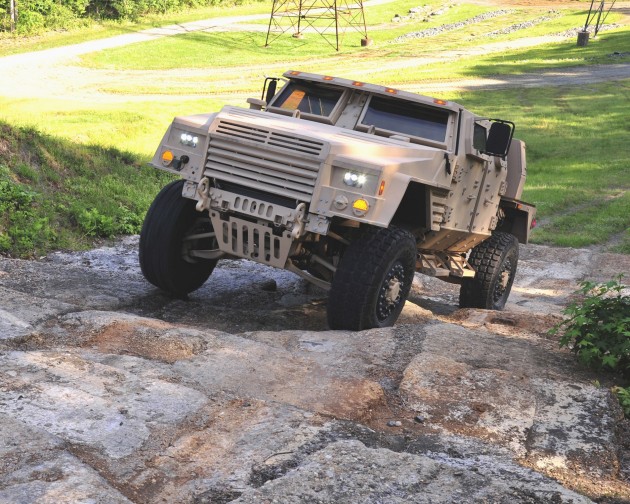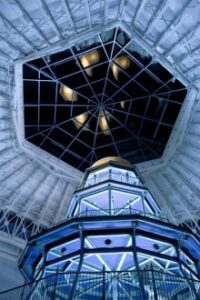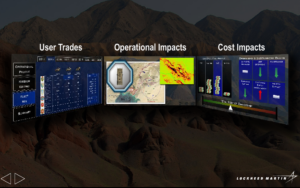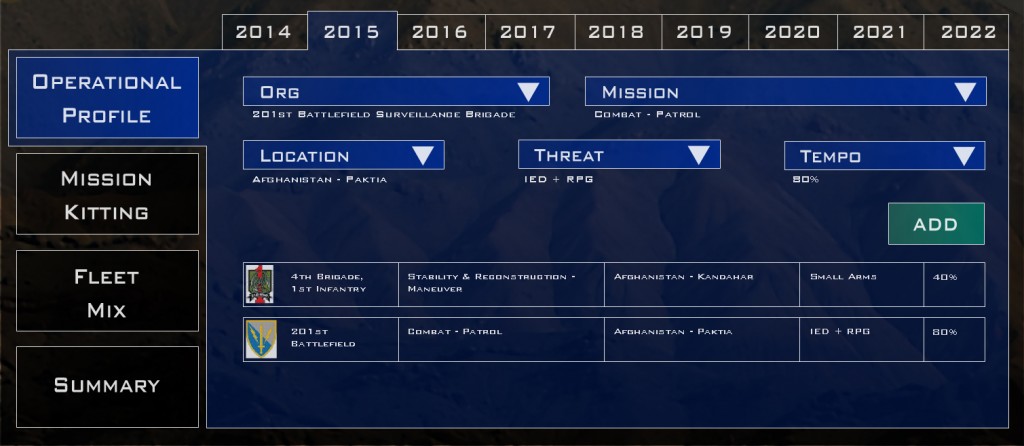Lockheed’s JLTV Line Starts In August; 6-D Truck Design
Posted on

Lockheed Martin’s prototype Joint Light Tactical Vehicle (JLTV).
[CORRECTED data on competitor Oshkosh] LOCKHEED MARTIN “LIGHTHOUSE,” SUFFOLK, VA: “We’re in a really tough competition…a knife fight in [a] phone booth,” said Tom Kelly, who runs Lockheed Martin’s government relations for the Joint Light Tactical Vehicle program.

The old lighthouse around which Lockheed Martin built its “Center for Innovation” in Suffolk, Va.
In the defense contracting world writ large, Lockheed is the 800-pound gorilla. In the three-way competition to replace the aging Humvee, however, Lockheed is the odd duck next to truck-makers AM General and Oshkosh. Best known for high-tech, high-cost, and high-controversy projects like the F-35 Joint Strike Fighter, the Littoral Combat Ship, and the EELV satellite-launching rocket, Lockheed must convince the military that its space-age infrastructure is an asset, not just overhead, when it comes to building what’s basically an armored truck.
So this August, even as Pentagon brass and bureaucrats descend on all three competitors for a “production readiness review,” Lockheed Martin will turn on its JLTV production line in Camden, Arkansas, executives told me this morning. That will be especially impressive because, until this spring, the production line was 400 miles away in Sealy, Texas.
“This isn’t a new line; we literally picked up the line and moved it,” said Scott Greene, Vice-President for Ground Vehicles at Lockheed’s Missile & Fire Control division. The Sealy factory belonged to Lockheed’s partner BAE Systems, a major manufacturer of ground combat vehicles. Among other things, Sealy built the Caiman variant of the Mine-Resistant Ambush-Protected Vehicle. MRAPs were the short-term replacement for the vulnerable Humvee but proved too massive and unmaneuverable for most missions beyond Afghanistan, which is the reason the military started the JLTV program in the first place. BAE remains Lockheed’s partner on JLTV, but they’re closing the Sealy plant, where Lockheed’s JLTV prototypes were all built.
“What would appear to some to be a disadvantage, for us is a significant advantage,” argued Harold O’Neal, VP for Production Operations, because moving the line was a golden opportunity to rebuild it with improvements drawing on both BAE and Lockheed expertise. “By the 18th of August, which is just a few weeks away,” he said, the line will be humming and running tests with an already-built JLTV prototype. “We could do it today, but we’re [first] verifying every single adjustment and modification we’ve made,” he said. Then, sometime in the fourth quarter, the Camden line will start building all-new JLTVs.

Part of Lockheed’s massive Camden, Ark. campus.
Lockheed won’t deliver those vehicles to the government: The Pentagon doesn’t plan to choose the winning bidder until 2015, and looming sequestration cuts could delay that decision. Instead, the company is building those JLTVs for its own tests, the first test being whether the relocated and upgraded line builds them perfectly as planned.
By contrast, since rival AM General delivered the contractually required 22 prototypes to the government last year, “we have not built any more [JLTVs] nor do we intend to build any more,” said program manager Chris Vanslager. Since AM General’s JLTVs were built on the same production line that is continuously building Humvees to this day, he said, “AM General does not foresee a need to do additional verification and validation of our processes.”
[CORRECTED: The third competitor, Oshkosh, is continuing to build additional JLTVs — on the same production line that builds military FMTV and M-ATV trucks. “Fortunately, we haven’t needed to move our JLTV production line, so we continue to produce JLTV in the same facility, and are currently optimizing the line as part of our continuous improvement process,” a spokesman told me. (In an earlier version of this article, I’d mistakenly said Oshkosh had not built any JLTVs after the 22 vehicles for government testing; the error was entirely mine).]
But building more JLTVs this fall will prove an important point for Lockheed. While the company has run the Camden plant since 1981, it’s not actually built trucks there before. The award-winning facility mainly manufactures missiles and artillery, relatively simple stuff by Lockheed aerospace standards but still high-end compared to JLTV. The closest Camden’s come is to integrate missile launchers — Patriot, THAAD, HIMARS — onto truck chassis built elsewhere.
Lockheed insists Camden can build JLTV at an affordable price. “We have a skilled, trained, certified workforce in Camden,” O’Neal told me. With the campus of South Arkansas University – Tech actually on site, he said, “what we have there is at one facility are all the combined process skills, process certification, process training.” Lockheed has hired and borrowed some BAE personnel to help with JLTV, mostly for their “tribal knowledge” gained from years of hands-on experience, he said, but “we already had all the skills in place.”

A representation of Lockheed’s design tradeoff analysis software.
Lockheed also argues its high-tech skillset can actually help keep the cost down on JLTV. Before they started building, the company designed a new kind of computer program to do complex tradeoffs on how different designs would perform on different missions. “A traditional relational database typically wouldn’t help us do that fast enough,” Lockheed’s Dave Milkovich told reporters visiting the company’s modeling and simulation center, nicknamed “the Lighthouse.”
Instead, Lockheed came up with a six-dimensional framework that took inputs as varied as weight of armor, electrical power generation, and the terrain in different areas of Afghanistan, then computed outputs ranging from cross-country performance to gas consumption to the total cost to operate and maintain the vehicle over its service life.

A close-up of some of the detailed inputs into the analysis software.
Lockheed is now using a similar approach for the mission equipment it will provide for the Future Vertical Lift aircraft, a massively more complex program where Lockheed must account for multiple variants and four competing designs.
Calculating long-term operating costs is a notoriously imprecise business, however: Witness the debates over the “life cycle cost” of Lockheed’s F-35. So far, however, with more than 200,000 miles of real world tests performed, Lockheed says the actual, physical JLTV prototypes are performing the way the models and simulations said that should.
“All the miles on your test vehicles have validated your models, which in turn gives us confidence in our sustainment [plan],” said Jim McArthur, who runs the Lighthouse, to Lockheed JLTV executives. “We understand total cost of ownership.”
If Lockheed can convince a cash-strapped Pentagon that it can accurately calculate long-term operations and sustainment costs, let alone control them, that will be a major selling point across multiple programs, not just JLTV. For now, though, the immediate challenge is to make sure the relocated JLTV line works as advertised.
Subscribe to our newsletter
Promotions, new products and sales. Directly to your inbox.
